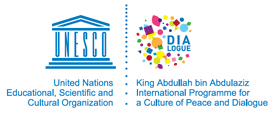DURATION: 2 hours
KEY TOPICS
- The global economy, e-commerce and media ownership
- Patterns of communication, media ownership and control
- Private (commercial) media, government-owned or controlled media, and public media organizations, e.g., public broadcasting systems
- Community media
- Technology convergence (mass media, telecommunications and computers) and the emergence of media conglomerates
- Pluralism and concentration (e.g., media chains and cross ownership)
- Acquisitions, mergers, joint ventures and consortiums
- Transnationalization (global media corporations)
- International and national protocols on media ownership
- Anti-trust laws
- Foreign ownership limitations
- Other regulatory policies and mechanisms
- Media ownership, content development and programming
- Foreign content vs. local content
- Outsourcing, offshoring and home sourcing
- Tensions between editorial independence and ownership interests
LEARNING OBJECTIVES
After completing this unit, teachers will be able to:
- Describe the different patterns of media ownership and control
- Discuss the workings of the global economy, and the emergence of new technologies, and how these affect media ownership structures and patterns
- Assess how media ownership and control affects media policies, processes, content, and transmission
- Demonstrate how media convergence facilitates new approaches to content (editorial) development (e.g., outsourcing, offshoring and home sourcing)
- Understand how existing international conventions and national laws/policies shape or regulate media ownership structure
PEDAGOGICAL APPROACHES and ACTIVITIES
Monopolistic ownership of the media, like state control, can pose a significant threat to media diversity and pluralism, and therefore to freedom of expression. Competition regulation is an important part of restricting monopolies as is the professionalism and independence of journalism. Diversity of viewpoints is also helped by a variety of forms of ownership (public, private and not-for-profit), as well as by the availability of different types of media (print, radio, television, Internet, etc.). For discussion: The widest possible dissemination of information from diverse and antagonistic sources is essential to the welfare of people. While separately-owned newspapers and broadcasters generally criticize each other’s content, the concentration of media under common ownership may prevent any kind of mutual criticism and result instead in self-promotion.

